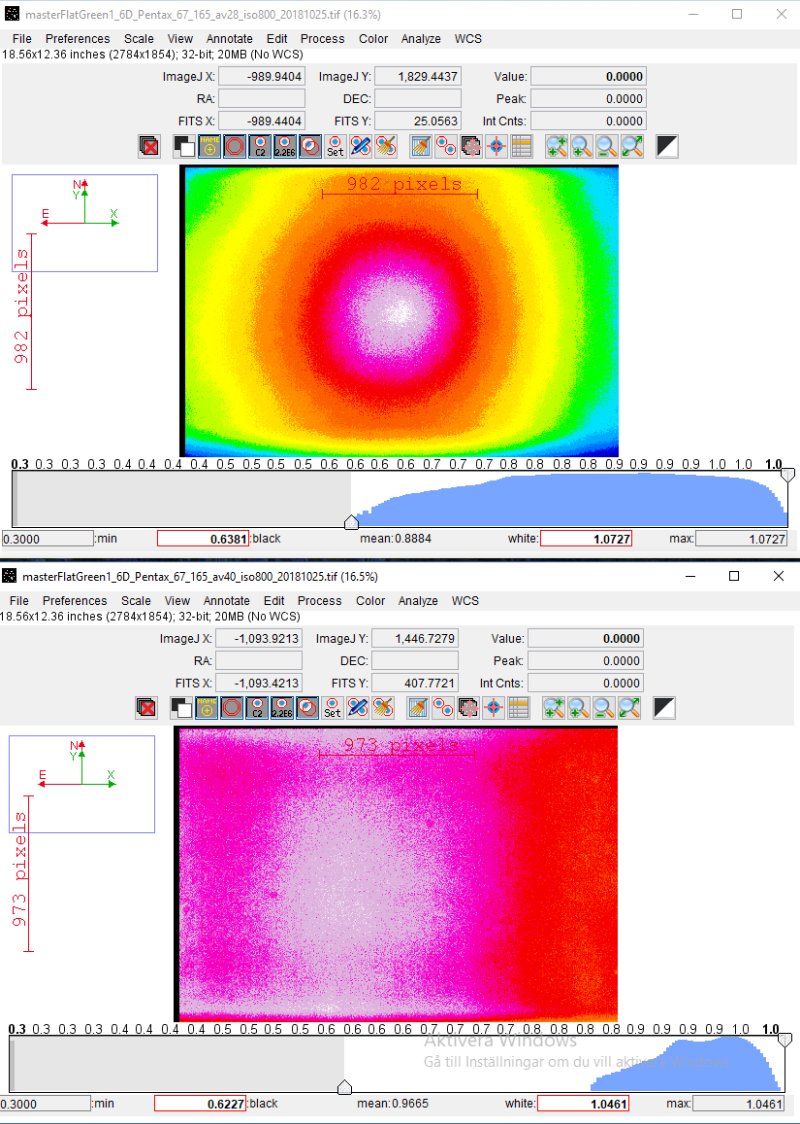|
Advertisement / Annons: |
Project:
|
Content:
Note: |
5. Analyze of Pentax 6x7 at f/2.8 and at f/4.0The back ground images above that display the flat image is a bit unclear. I have done it in another way here. I use the AstroImageJ software to do this. One flat image with aperture set to f/2.8 and the other set to f/4.0. I took new flats today with the Canon 6D camera. There is a difference compare to the flats I took with the old Canon 5D camera. But it's not easy to have full control over the light situation and maybe I earlier didn't set the aperture to f/4, instead 4.47, just above. These two images are taken from the first green channel in a master flat. 
The black point is set to 60% of max signal for both. The color table is divided in 16 colors, from 100% to 60%, 2.5% units per color step. Below the images is the histogram. The f/4 has the signal much more concentrated at high level compare to the f/2.8 setting. Still both setting is very good compare to what you get from an ordinary lens mounted on a full frame camera. The f/4 setting gives almost a perfect flat, about 10% drop in signal at the corners. When you open the aperture it increase the incoming light most in the center and much less in the corners. Some notes, the white area at top and bottom I think comes from reflections inside the entrance of the camera house. The most bottom red line comes from the mirror vignetting. Later I maybe remove this mirror from the camera to get it to perform better. Now I can understand that they must had redesigned the lenses when they introduced the SLR camera. To fit a mirror between the lens and the film they must have a very narrow entrance in the camera house, then the lens must have a narrow ray cone. For sure not the optimal in view of optical performance. Leica at that time didn't have SLR design and they had the reputation to have very good lenses.
|
|